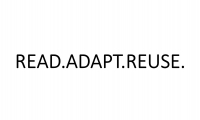In Europe, the building sector is responsible for almost a quarter of the total mass of generated waste and hence has a major environmental impact. To reduce that impact, the Flemish region, like others, has put forward the ambition to realise an economy of closed material loops by 2025.
Architectural flat glass is a fully recyclable material, but continues to follow a linear, wasteful path from renovation and demolition sites into landfill or low-value recycling. Yet, various niche practices illustrate that technologies and skills are at hand to repair, reuse and recycle flat glass at high value. What lacks is the proper transfer of this information into concrete guidance of practitioners.
As a response to this knowledge gap, the research aims at developing a practitioner’s road map – serving as a prototype for other waste flows – to support all practitioners of the building sector in valorising end-of-life flat glass. To achieve this, two questions are key. First, which circular strategies allow to maximise the value of flat glass in a closed material loop with a minimal environmental impact? And second, how can practitioners collectively implement those strategies in building projects?
By the involvement of practice’s stakeholders throughout the research, a road map will be developed, tested and validated to support designers, engineers and contractors in making better-informed choices, close the flat glass loop and make the transition to the circular economy happen.

